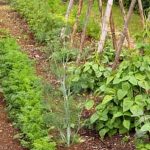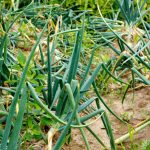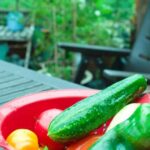Are you looking to add a touch of natural beauty to your vegetable garden in Zone 9? The synergy of flowers and vegetable gardens in this climate zone can create stunning and productive outdoor spaces.
With the right selection of blooms, you can enhance the visual appeal of your garden while also attracting beneficial insects and pollinators. In this article, we will explore the art of integrating flowers into vegetable gardens in Zone 9, from understanding the climate to choosing the best plants and maintaining a thriving garden throughout the seasons.
Zone 9 is characterized by its warm and mild climate, making it ideal for a wide variety of plant life. Understanding this unique climate is essential when it comes to successful gardening. By selecting the right flowers for your vegetable garden in Zone 9, you can create a vibrant and sustainable ecosystem that supports both your ornamental and edible plants.
Companion planting is an essential aspect of gardening, especially in Zone 9 where space and resources are valuable. We will delve into the best flower options for companion planting with vegetables in Zone 9, allowing you to maximize productivity while creating a visually appealing garden. Whether it’s marigolds to deter pests or sunflowers to provide shade, the possibilities are endless for enhancing your vegetable garden with beautiful blooms in Zone 9.
Understanding Zone 9 and Its Climate for Gardening
Zone 9 is characterized by its mild winters and hot summers, making it an ideal location for gardening. With this climate, gardeners in Zone 9 have a long growing season, allowing for a wide variety of flowers and vegetables to thrive. The average minimum winter temperature in Zone 9 ranges from 20-30°F (-6.7 to – 1.1°C), while the summer temperatures can reach up to 100°F (37.8°C).
The key to successful gardening in Zone 9 lies in understanding the unique climate and selecting plants that can withstand both the heat of summer and occasional cold snaps in the winter. When it comes to selecting flowers for vegetable gardens in Zone 9, it’s important to choose varieties that are heat-tolerant and can handle the intense sunlight. Some popular flower options for Zone 9 vegetable gardens include zinnias, sunflowers, marigolds, and cosmos.
In addition to heat tolerance, it’s also essential to consider water requirements when choosing flowers for Zone 9 vegetable gardens. Drought-resistant flowers such as salvias, yarrows, and lavender are excellent choices for Zone 9 gardens as they can withstand periods of dry weather without sacrificing their beauty. By selecting the right flowers that are well-suited for the climate of Zone 9, gardeners can create a vibrant and colorful landscape that complements their vegetable crops.
| Flower Options | Characteristics |
|---|---|
| Zinnias | Heat-tolerant and come in a wide range of colors |
| Sunflowers | Tall and sturdy with bright yellow blooms |
| Marigolds | Drought-resistant with vibrant orange or yellow flowers |
Selecting the Right Flowers for Zone 9 Vegetable Gardens
When it comes to selecting the right flowers for your vegetable garden in Zone 9, it’s essential to choose varieties that can thrive in the warm climate of this region. Fortunately, there are plenty of options to choose from, allowing you to add beauty and functionality to your garden space.
One important consideration when choosing flowers for your Zone 9 vegetable garden is to select those that can withstand the high temperatures and occasional drought conditions that are characteristic of this climate.
One popular flower option for Zone 9 vegetable gardens is the marigold. Not only do these vibrant flowers add a pop of color to your garden, but they also serve a practical purpose.
Marigolds are known for their ability to repel pests such as nematodes, making them an excellent companion plant for vegetables like tomatoes and peppers. Another great choice for Zone 9 gardens is zinnias, which come in a variety of bright hues and can tolerate the heat and sun with ease.
In addition to marigolds and zinnias, other suitable flower options for Zone 9 vegetable gardens include sunflowers, cosmos, and nasturtiums. These flowers not only enhance the aesthetic appeal of your garden but also attract beneficial pollinators like bees and butterflies. By choosing the right flowers for your Zone 9 vegetable garden, you can create a harmonious and thriving space that combines both beauty and functionality seamlessly.
Companion Planting
When it comes to creating a thriving vegetable garden in Zone 9, integrating flowers into the mix can be a game-changer. Not only do flowers add beauty and color to your garden, but they can also provide numerous benefits for your vegetable plants.
Companion planting flowers in your vegetable garden in Zone 9 can help attract beneficial insects, repel pests, and even improve soil quality. Here are some of the best flower options to consider for your Zone 9 vegetable garden:
- Marigolds: These vibrant flowers are not only beautiful but also serve as natural pest repellents, particularly against nematodes. Planting marigolds around your vegetable plants in Zone 9 can help keep harmful pests at bay.
- Pansies: Known for their bright and cheerful blooms, pansies are excellent companion plants for vegetables such as tomatoes, peppers, and cucumbers. They not only add color to your garden but also attract pollinators that benefit your vegetable plants.
- Nasturtiums: With their edible flowers and foliage, nasturtiums are a fantastic addition to any Zone 9 vegetable garden. These flowers can deter aphids, whiteflies, and squash bugs while adding a pop of color to your garden beds.
Incorporating these flowers into your Zone 9 vegetable garden can create a harmonious environment where both plants thrive together. By strategically selecting the right flowers as companions for your vegetables, you can enhance the overall health and productivity of your garden.
Additionally, when choosing flower options for companion planting in a Zone 9 vegetable garden, it’s important to consider the climate and growing conditions specific to this region. Opting for heat-tolerant and drought-resistant flowers will ensure that they can withstand the hot summers often experienced in Zone 9. Incorporating native wildflowers or perennials that are well-suited to this climate will also contribute to the success of your flower and vegetable integration efforts.
Tips for Successful Flower and Vegetable Garden Integration in Zone 9
When it comes to successful integration of flowers and vegetable gardens in Zone 9, there are a few key tips to keep in mind. First and foremost, it’s important to consider the compatibility of the flowers and vegetables you want to plant together.
Some flowers can actually help protect vegetables from pests or attract beneficial insects, while others may compete for resources or even inhibit vegetable growth. Researching which flowers work best with specific vegetables is crucial for a thriving garden in Zone 9.
Another important tip for successful flower and vegetable garden integration in Zone 9 is proper spacing. While it may be tempting to densely pack plants together, especially in a limited space, overcrowding can lead to poor air circulation and increased risk of diseases. Be sure to give both your flowers and vegetables enough space to grow and thrive.
Additionally, paying attention to the water needs of both your flowers and vegetables is essential for successful integration in Zone 9. Some flowers may require more frequent watering compared to certain vegetables, so it’s important to find a balance that meets the needs of all plants in your garden. Mulching can also help retain moisture and regulate the soil temperature for both types of plants.
By carefully considering plant compatibility, spacing, and watering needs, you can achieve a harmonious integration of flowers and vegetable gardens in Zone 9. With these tips in mind, you’ll be on your way to creating a beautiful and productive garden that combines the best of both worlds.
Maintaining a Thriving Flower and Vegetable Garden in Zone 9
Proper Watering and Drainage
In Zone 9, where the climate can be hot and dry, it’s crucial to provide adequate watering for both your flowers and vegetables. Be sure to water deeply but infrequently to encourage deep root growth. Additionally, proper drainage is essential to prevent waterlogged soil, which can lead to root rot for both flowers and vegetables.
Weed Control
Weeds can quickly overtake a garden if left unchecked, competing with your flowers and vegetables for nutrients and water. Regular weeding is necessary in Zone 9 gardens to maintain a healthy growing environment. Consider using mulch or landscape fabric to help suppress weed growth while also retaining moisture in the soil.
Pest Management
In Zone 9, pests such as aphids, whiteflies, and spider mites can be particularly problematic for both flowers and vegetables. Implementing natural pest control methods like companion planting with pest-repelling flowers or using insecticidal soaps can help keep these garden pests at bay without harming beneficial insects.
By being proactive in maintaining your flower and vegetable garden in Zone 9 through proper watering, effective weed control, and pest management, you can create an environment where both plants can thrive together harmoniously. This ongoing care will allow you to enjoy the beauty of blooming flowers alongside a plentiful harvest of vegetables throughout the growing season.
Seasonal Considerations for Flower and Vegetable Gardening in Zone 9
When it comes to gardening in Zone 9, understanding the seasonal considerations is crucial for the success of your flower and vegetable garden. With hot summers and mild winters, Zone 9 presents unique challenges and opportunities for gardeners. Whether you are a seasoned gardener or just starting out, knowing how to navigate each season will help you make the most of your garden.
Spring
In Zone 9, spring brings pleasant temperatures that are ideal for planting a variety of flowers and vegetables. This is the time to prepare your garden beds, start seeds indoors, and transplant young plants. Some popular flower options for spring include sunflowers, zinnias, and marigolds, which add vibrant colors to your garden. For vegetable gardening, consider planting tomatoes, peppers, cucumbers, and squash during this time.
Summer
Summer in Zone 9 can be challenging due to the intense heat. It is important to provide adequate water and shade for both your flowers and vegetables during this time. Consider planting heat-tolerant flowers such as lantanas, salvias, and vinca to add beauty to your garden despite the high temperatures. For vegetables, focus on heat-loving crops like okra, sweet potatoes, eggplant, and black-eyed peas.
Fall
Fall in Zone 9 brings relief from the scorching summer heat and provides an opportunity to plant cool-season flowers and vegetables. You can add color to your garden with pansies, snapdragons, and petunias during this time. For vegetable gardening, consider planting broccoli, cabbage, carrots, and lettuce as they thrive in the cooler temperatures of fall.
Understanding how each season impacts your flower and vegetable garden in Zone 9 will help you plan accordingly and ensure a thriving garden year-round. By selecting the right plants for each season and providing proper care based on the unique climate of Zone 9 gardens, you can enjoy a beautiful and bountiful garden throughout the year.
Showcase of Stunning Flower and Vegetable Garden Designs in Zone 9
When it comes to designing a stunning flower and vegetable garden in Zone 9, the possibilities are endless. The warm climate and abundant sunshine in Zone 9 create the perfect environment for a colorful and bountiful garden. Here are some inspiring designs to consider when planning your own flower and vegetable garden in Zone 9:
Cottage Garden Design
Create a charming and romantic cottage garden by mixing vegetables and flowers together. Planting tall, flowering plants such as hollyhocks or foxgloves alongside your veggies can add vertical interest to your garden. Incorporate a variety of colors and textures to give your garden a whimsical feel.
Formal Garden Design
For a more structured and elegant look, consider a formal garden design for your flower and vegetable garden. Use geometric patterns and symmetry to layout your beds, with neatly trimmed hedges or topiaries defining the space. Choose flowers with bold blooms like roses or dahlias to add pops of color throughout the design.
Edible Landscaping Design
Blend beauty and functionality with an edible landscaping design that integrates flowers and vegetables seamlessly. Consider incorporating edible flowers such as nasturtiums or pansies, which not only add visual appeal but can also be used in salads or as garnishes.
By embracing these stunning flower and vegetable garden designs, you can create a visually appealing and productive space in Zone 9 where flowers complement the bounty of your vegetable harvest.
Conclusion
In conclusion, cultivating a harmonious blend of flowers and vegetables in Zone 9 gardens can be a rewarding and enjoyable experience. The unique climate of Zone 9 provides ample opportunities for gardeners to explore the beauty and functionality of integrating flowers into their vegetable gardens. By understanding the climate and selecting the right flowers, as well as utilizing companion planting techniques, gardeners in Zone 9 can create stunning and productive garden spaces.
When it comes to maintaining a thriving flower and vegetable garden in Zone 9, it’s essential to consider seasonal considerations and tips for successful integration. By being mindful of the specific needs of both flowers and vegetables, gardeners can ensure that their garden remains vibrant throughout the year. Additionally, seeking inspiration from stunning flower and vegetable garden designs in Zone 9 can provide valuable insights for creating visually appealing and functional garden spaces.
Ultimately, embracing the harmony of flowers and vegetables in Zone 9 gardens allows for a rich tapestry of colors, textures, and flavors. As gardeners continue to explore creative ways to blend these elements together, they contribute not only to the visual appeal of their outdoor spaces but also to the sustainability and productivity of their gardens.
With proper care and thoughtful planning, a flower and vegetable garden in Zone 9 can truly become a testament to nature’s beauty and abundance.
Frequently Asked Questions
What Annuals Will Grow in Zone 9?
In Zone 9, annuals like zinnias, marigolds, petunias, and sunflowers thrive due to the warm climate. These plants can be grown from spring to fall, taking advantage of the long growing season.
Can You Grow Plants All Year in Zone 9?
Yes, in Zone 9, it is possible to grow plants all year due to the mild winters. With careful selection of cold-hardy plants and frost protection measures, gardeners can keep their gardens thriving throughout the year.
What Is Companion Planting in the Garden?
Companion planting in the garden involves planting different types of plants near each other to maximize growth and deter pests. For example, planting basil near tomatoes can improve tomato flavor and repel certain pests naturally. This method promotes a more balanced ecosystem within the garden.

If you’re looking to get into vegetable gardening, or are just looking for some tips on how to make your current garden better, then you’ve come to the right place! My name is Ethel and I have been gardening for years. In this blog, I’m going to share with you some of my best tips on how to create a successful vegetable garden.





